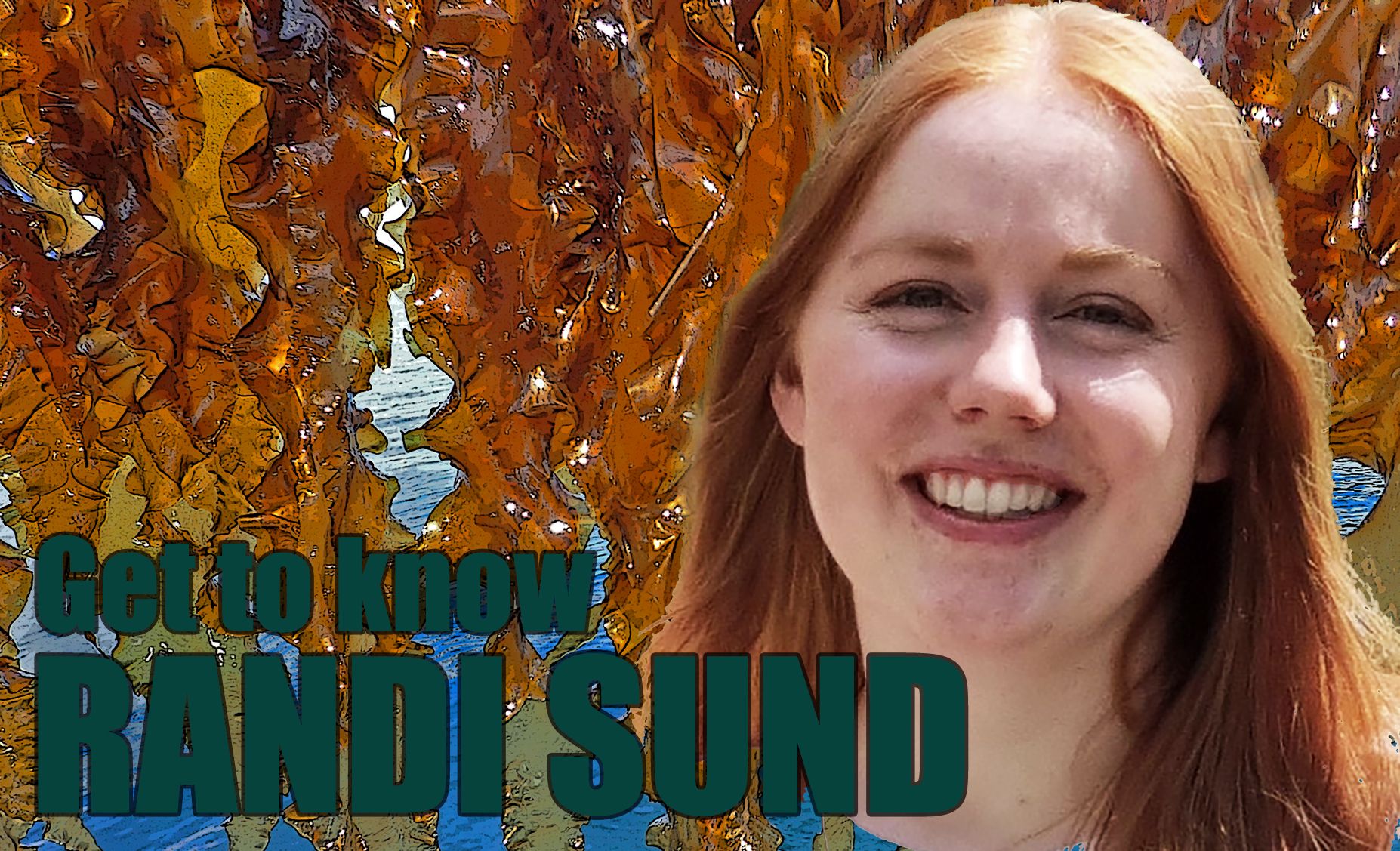
Randi Sund started her PhD in June 2022 looking at how we can use new and innovative processing technologies such as pulsed electric fields (PEF), ultrasound, and microwaves in combination with traditional processing methods such as blanching, fermentation, and hot air drying to aid in the sustainable production of safe and nutritious food ingredients from cultivated kelp. Her PhD is a collaboration between the department of processing technology in Nofima and The Technical University of Denmark (DTU) with Dagbjørn Skipnes (Nofima), Susan Løvstad Holdt (DTU) and Claus Heiner Bang-Berthelsen (DTU) as supervisors.
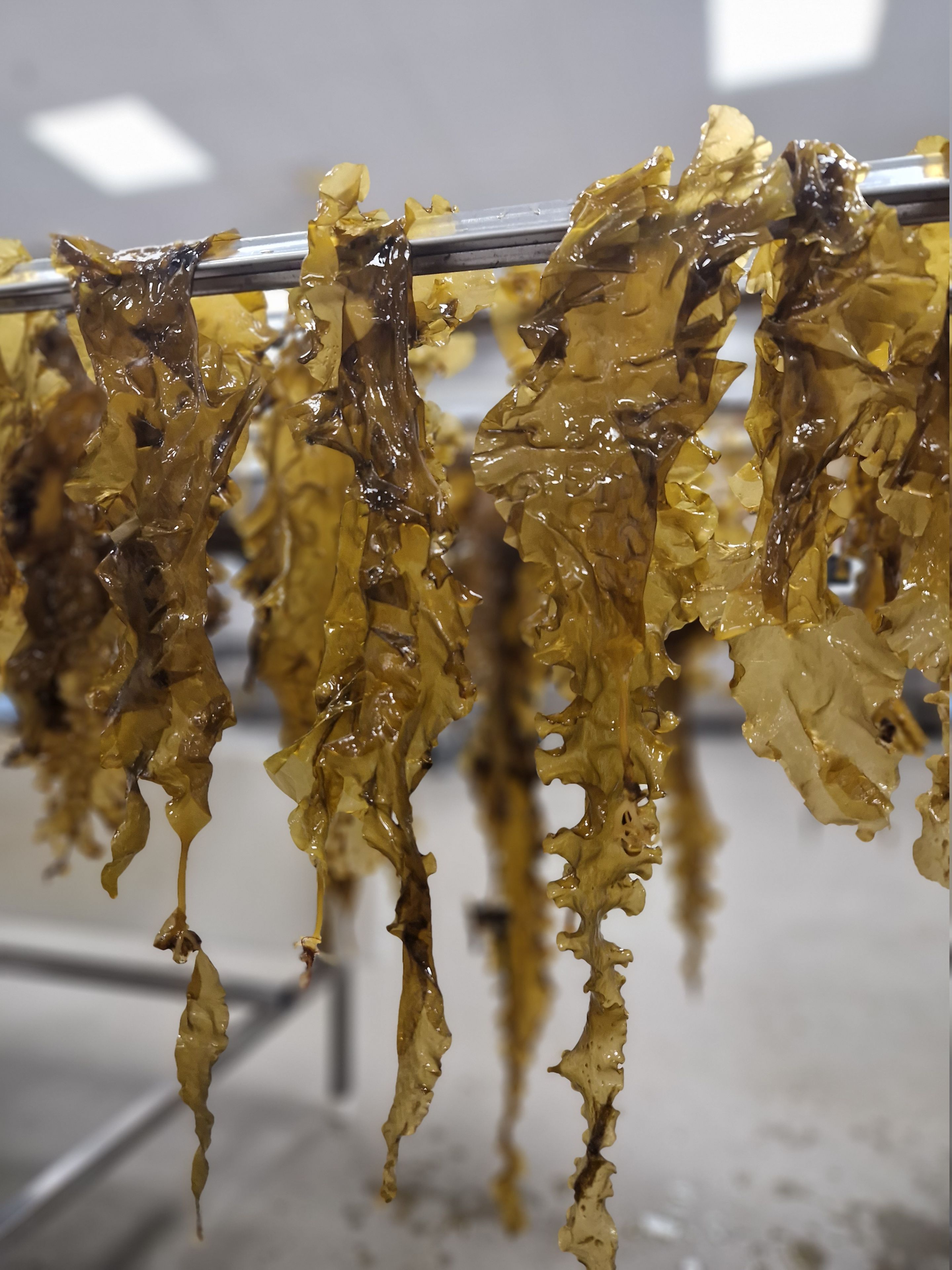
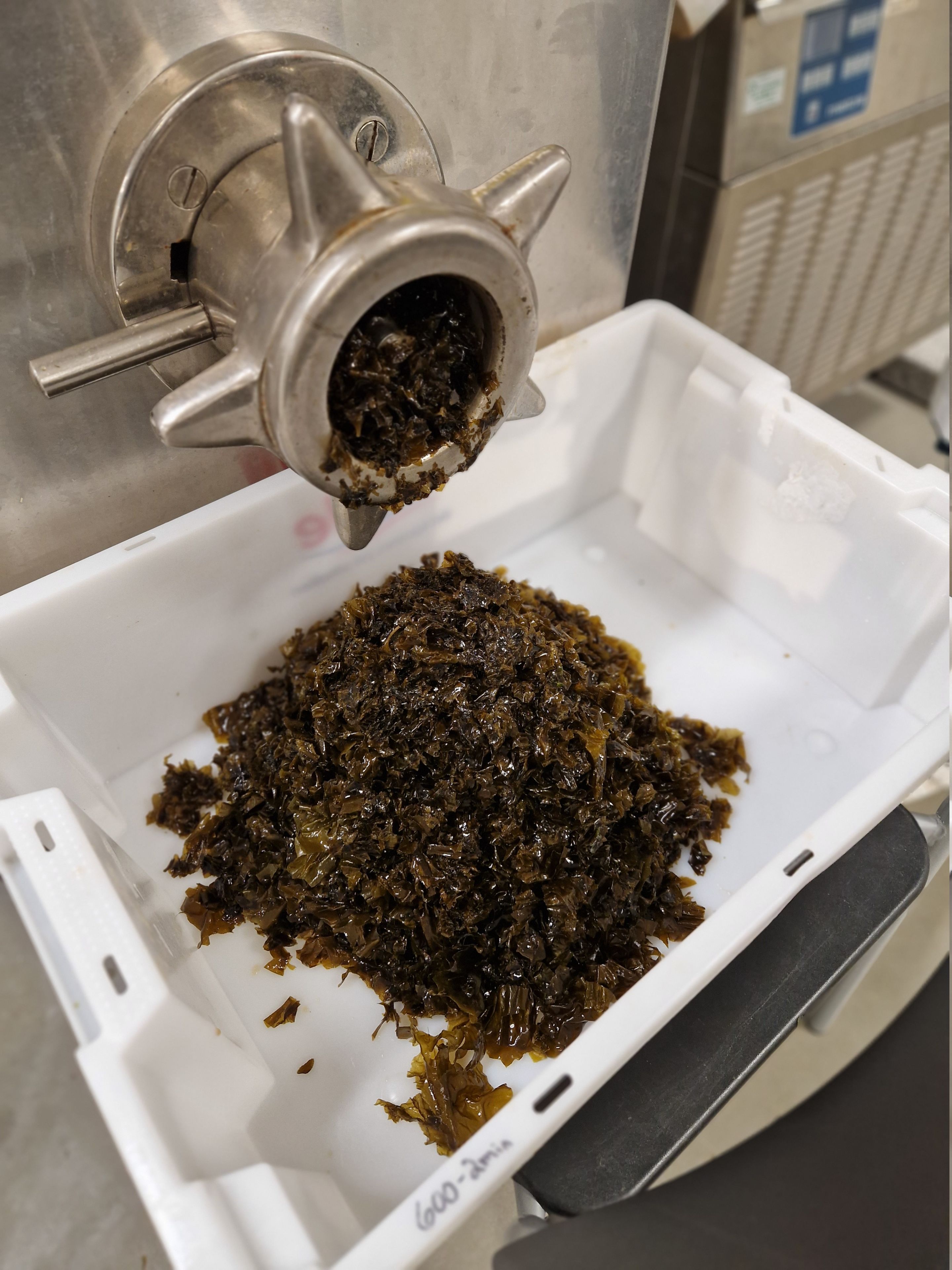
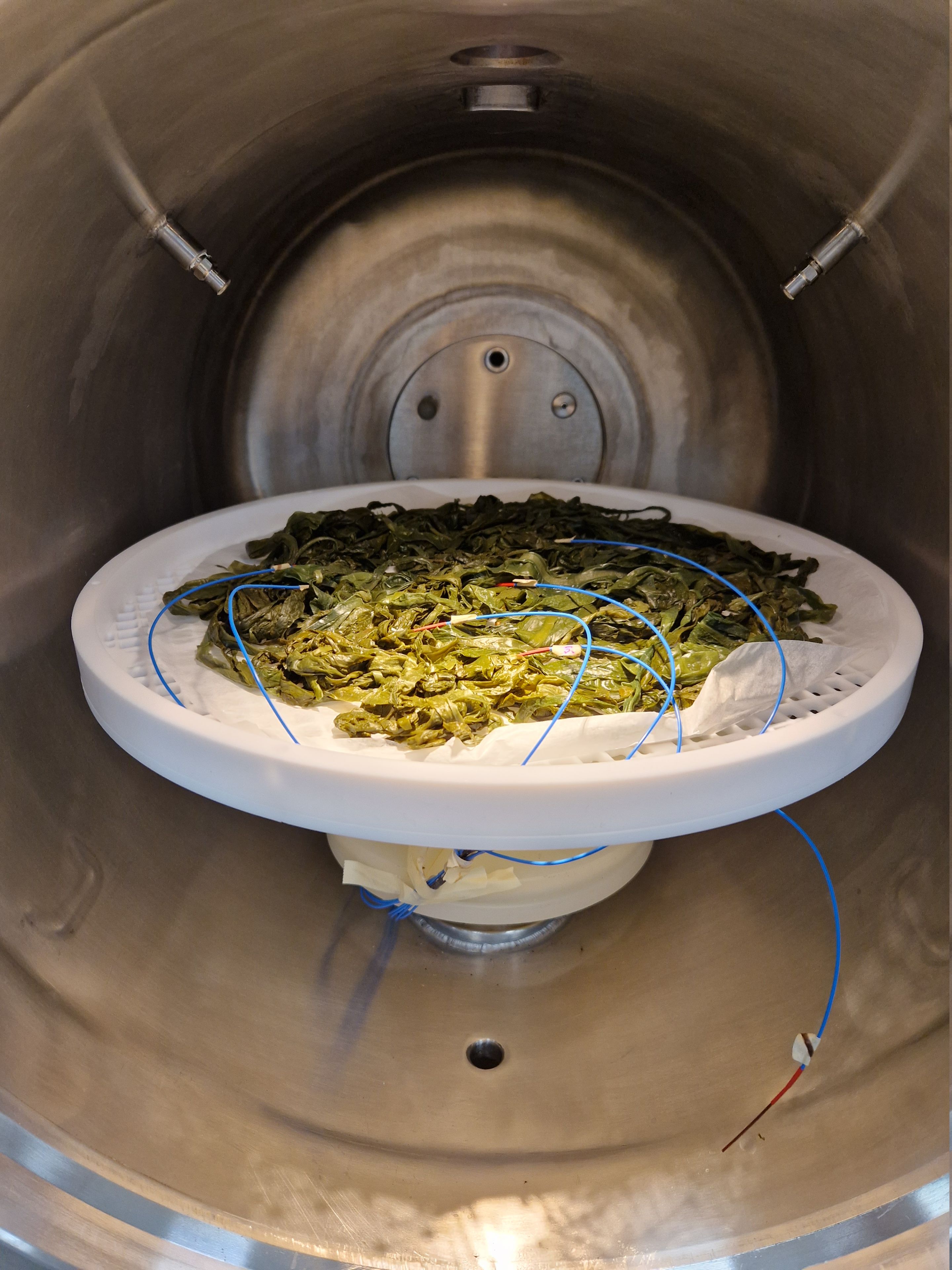
Left and midle pictures: preparation of Sugar kelp (Saccharina latissima) by drying and milling for trials. Right picture: drying of fermented kelp in a microwave autoclave, the blue wires are temperature sensors used to monitor the temperature of the product and regulate the microwave intensity so that the kelp does not get too hot. Photo credit: Randi Sund
Can you please give us some background about yourself?
I am from Stavanger, where I live and work now. I have a master’s degree in chemical engineering with a specialisation in biotechnology from NTNU in Trondheim. During my studies I found food chemistry very interesting and am now happy to be working within food research. Naturally, I am also very interested in food and cooking and enjoy trying new recipes and foods. I also enjoy reading, being out in the nature or by the sea, or just relaxing on the couch with a good TV series.
What was your experience with seaweed prior this PhD?
When I was young my only experience with seaweed was that it was very scary when it touched your feet when swimming in the ocean and that it was a good hiding place for small crabs at the beach. However, in my master’s thesis I got to work on the freezing and thawing of sugar kelp and winged kelp and realised that seaweeds are much more interesting than I thought!
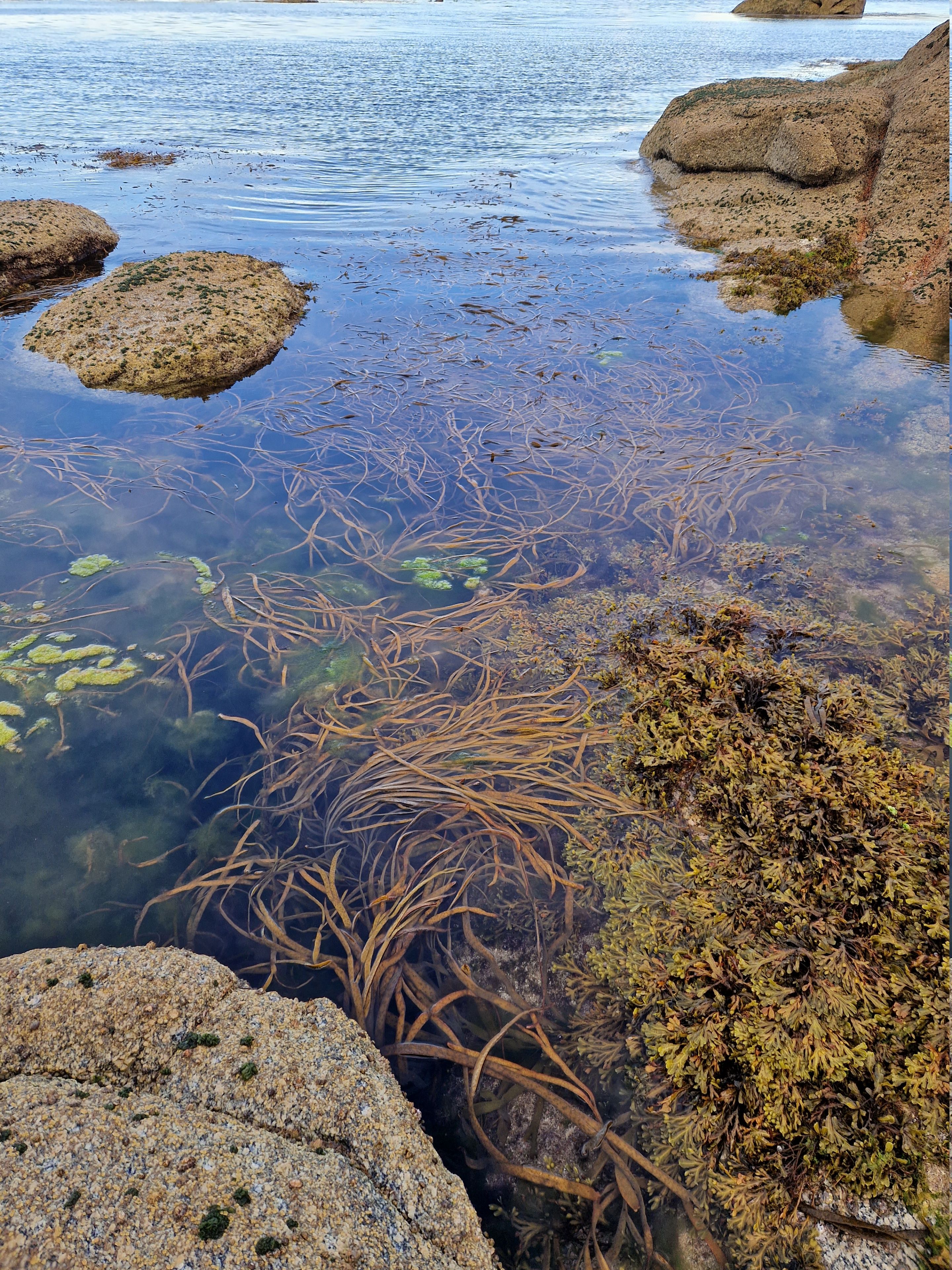
Scary seaweed that can touch your feet while you are swimming.
Photo credit: Randi Sund
How often do you include seaweed in your own diet?
Not often enough! I eat sushi from time to time but have not yet gotten into the habit of using seaweed in my own cooking. However, getting seaweed recipes from colleagues and trying different ways to use seaweed in food has inspired me and I really want to start using seaweed in my own cooking.
Why did you choose to work with seaweed as a food source for your PhD?
After being introduced to seaweed as a food source during my master’s thesis I found it very interesting and wanted to continue working within this field. Therefore, when the opportunity arrived to do a PhD on the processing of kelp for food production I applied and was lucky enough to get the job.
Who do you believe your PhD will be most useful for?
Hopefully, my work will help us gain a better understanding of how to best and most sustainably process cultivated Norwegian kelp to reduce potentially toxic elements such as heavy metals and iodine while retaining favourable nutritional components and I hope that the work I am doing in my PhD will be able to help the seaweed industry in Norway to find good processing methods for Norwegian kelp, supporting the growth of a sustainable seaweed industry.
Randi here representing Nofima and their work with seaweed.
Photo credit: Camilla Larsen
Where do you believe the seaweed industry will be in 10 years?
I believe that if we continue to work on how to produce safe and sustainable seaweed in Norway as well as making it accessible for the consumer, the seaweed industry could become a big part of the aquaculture industry in Norway.
What do you believe are the main challenges for this to happen?
It will be very important to find good ways to stabilise the seaweed after harvesting enabling the production of large volumes of seaweed that can be used throughout the year. Additionally, finding methods for reducing heavy metal and iodine content will be important to make sure that products are safe for consumption and accepted by consumers.
So finally - What is the tastiest seaweed you have ever eaten?
At a small beach bar on Illa de Arousa in Spania I had some fried sea spaghetti that was super tasty! It tasted just like fried calamari with a crunchy surface and chewy seaweed in the middle.
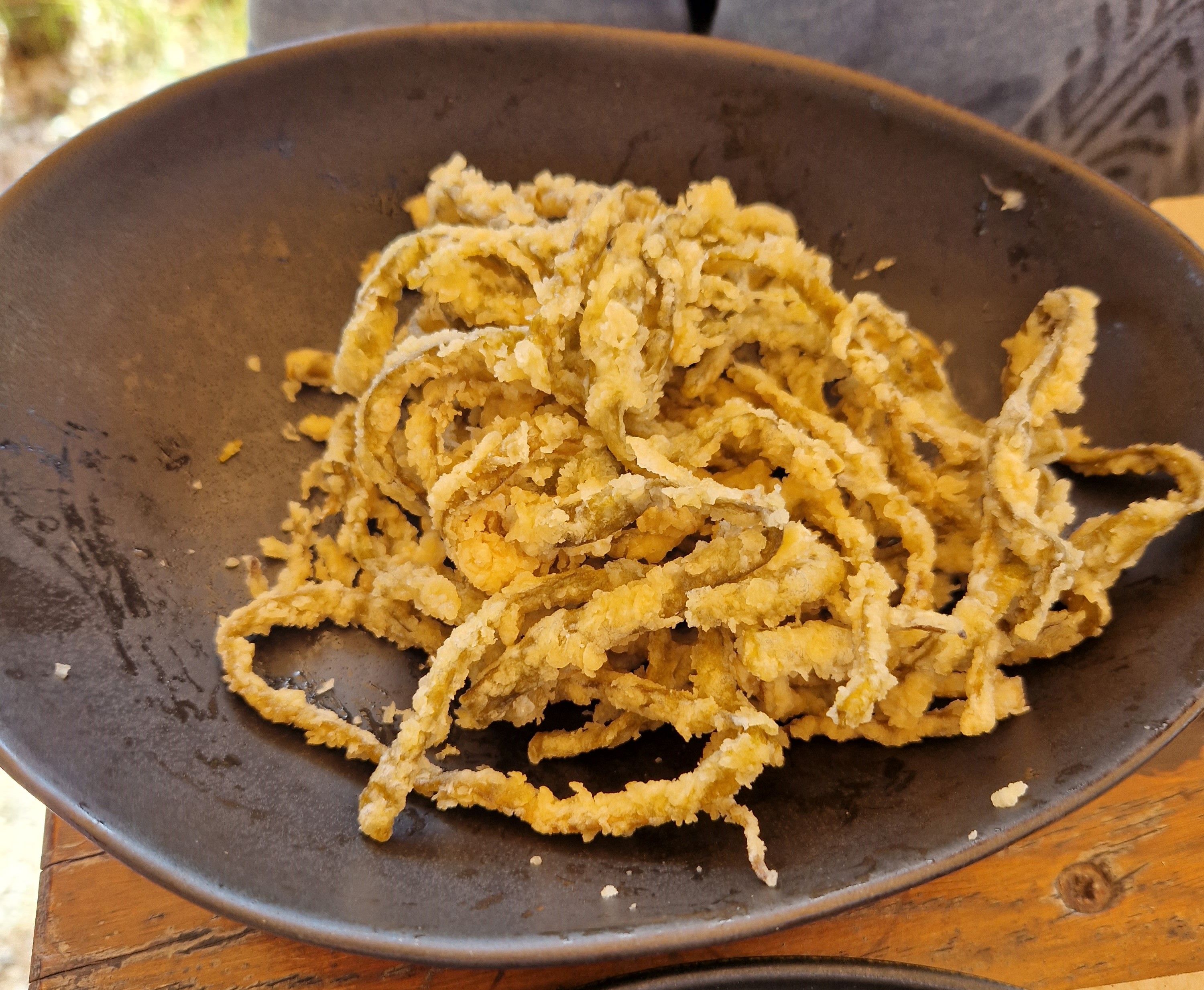
Delicious fried sea spagetti served in Illa de Arousa, Spain.
Photo credit: Randi Sund
We are happy to have Randi on the SusKelpFood team and are excited to see what answers her PhD will give us!